The Arabian Horse, a breed steeped in history and legend, stands as one of the oldest and most influential equine breeds in the world. Revered for its striking beauty, remarkable endurance, and spirited yet gentle temperament, the Arabian has captivated human hearts for millennia. This article delves into the fascinating world of the Arabian Horse, exploring its origins, unique characteristics, and profound impact on both the natural world and human civilization.
The Enduring Legacy of the Arabian Horse
Often described as the “fountainhead” of many modern horse breeds, the Arabian Horse boasts an ancestry that stretches back thousands of years. Its distinctive appearance and athletic prowess are the result of centuries of natural selection in harsh desert environments, coupled with meticulous selective breeding by nomadic peoples. This combination forged an animal of unparalleled resilience and grace.
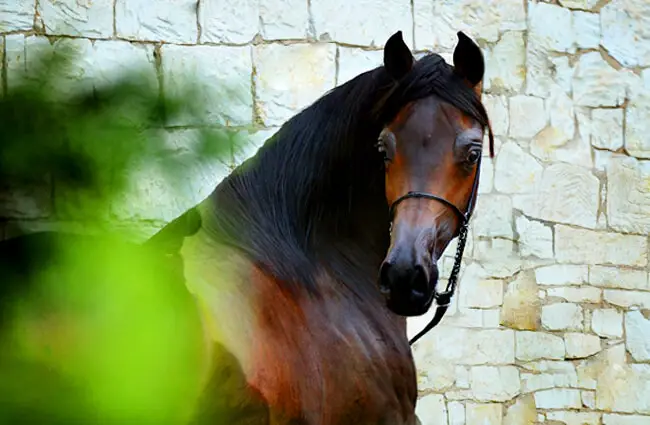
A Glimpse into Arabian Horse Evolution and History
The precise origins of the Arabian Horse are shrouded in the mists of time, but archaeological evidence suggests that horses with Arabian-like characteristics existed in the Arabian Peninsula as far back as 4,500 years ago. These early horses evolved in the arid, challenging landscapes of the Middle East, developing traits crucial for survival: exceptional stamina, efficient metabolism, and a keen intelligence.
The Bedouin tribes of the Arabian Desert are credited with refining the breed into the Arabian Horse recognized today. Living in close companionship with their horses, often sharing their tents, the Bedouins selectively bred for qualities essential for desert warfare and long journeys: courage, loyalty, speed, and endurance. This intimate relationship fostered the breed’s renowned gentle disposition towards humans, alongside its fiery spirit in action.

Where the Arabian Horse Calls Home: Habitat and Distribution
The ancestral habitat of the Arabian Horse is the Arabian Peninsula, characterized by vast deserts, sparse vegetation, and extreme temperatures. While truly wild populations of purebred Arabian Horses are virtually non-existent today, their genetic legacy thrives globally. Modern Arabian Horses are found in nearly every country, adapted to a wide range of climates due to human intervention and breeding programs. However, their physical traits still reflect their desert heritage, making them remarkably adaptable.
For an animal lover hoping to find Arabian Horses in their historical wild habitat, it is important to understand that this is largely a romantic notion. The purebred Arabian is a domesticated animal. Feral horse populations exist in various parts of the world, some of which may carry Arabian bloodlines, but these are not the pure, historically wild Arabians. Observing any feral horses requires respect for their space and adherence to local wildlife regulations.

The Arabian Horse’s Diet: Fueling Endurance
In their historical desert environment, Arabian Horses subsisted on sparse forage, including tough grasses, shrubs, and whatever edible plants could be found. This diet, combined with their active lifestyle, contributed to their efficient metabolism and ability to thrive on less feed than many other breeds. Today, domesticated Arabian Horses are typically fed a balanced diet consisting of:
- High-quality forage: Hay or pasture forms the cornerstone of their diet.
- Concentrates: Grains or commercial feeds are often supplemented, especially for performance horses or those with higher energy needs.
- Minerals and Vitamins: Essential for overall health, often provided through supplements or fortified feeds.
- Constant access to fresh water: Crucial for a breed adapted to arid conditions.
Their efficient digestive systems mean they can maintain good condition on relatively modest rations, a testament to their desert heritage.
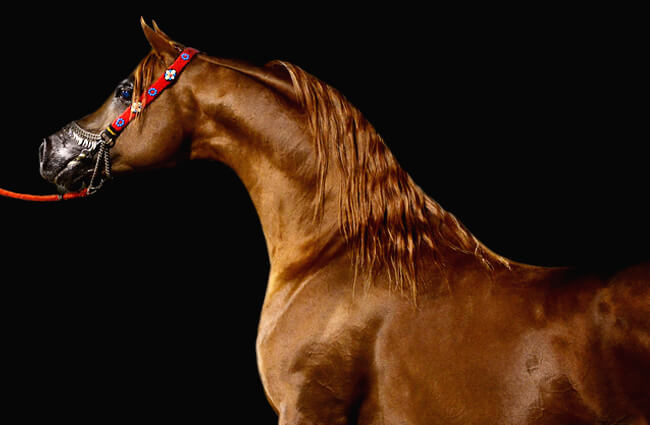
Mating and Reproduction in Arabian Horses
Arabian Horses follow the general reproductive patterns of domestic horses. Mares typically reach sexual maturity around 18 months to two years of age, though breeding is usually delayed until they are three or four years old to ensure full physical development. Stallions become fertile around two years of age.
- Breeding Season: Horses are seasonally polyestrous, meaning mares cycle during periods of longer daylight hours, typically spring and summer.
- Gestation: The gestation period averages about 11 months (330-340 days), culminating in the birth of a single foal. Twin pregnancies are rare and often carry higher risks.
- Foaling: Mares typically foal at night, and the process is usually quick. The foal is generally able to stand and nurse within an hour or two of birth.
- Social Structure: In a natural or semi-feral setting, a stallion would lead a harem of mares and their offspring, protecting them from predators and other stallions.

Arabian Horses and Their Ecosystem: A Symbiotic Relationship with Humans
In modern times, the Arabian Horse’s direct contribution to natural ecosystems is primarily through its role in managed pastures and agricultural settings, where they act as grazers. However, their most significant interaction is undoubtedly with humans. For centuries, they have been integral to human societies, serving as:
- Transportation: Essential for travel and trade across vast desert expanses.
- Warfare: Unmatched for their speed, stamina, and courage in battle.
- Agriculture: Used for light farm work in some regions.
- Companionship: Deeply valued for their loyal and intelligent nature.
Their historical presence in the desert would have seen them interacting with other desert fauna, potentially as prey for large predators in truly wild scenarios, and as competitors for scarce water and forage with other herbivores. However, their primary ecological niche has long been shaped by their domestication.

The Arabian Horse in Human Culture and Interaction
Few animals have woven themselves into the fabric of human culture as deeply as the Arabian Horse. Their influence spans art, literature, religion, and sport, making them a global icon.
A Cultural Icon: Contribution to Human Culture
The Arabian Horse is more than just a breed; it is a living legend. Its cultural significance is immense:
- Religious Texts: Mentioned in the Quran, often associated with blessings and nobility.
- Folklore and Poetry: Central to countless tales of heroism, loyalty, and adventure in Middle Eastern literature.
- Art: Depicted in ancient carvings, paintings, and sculptures, symbolizing beauty, power, and grace.
- Sport: The foundation of modern horse racing (through the Thoroughbred) and a dominant force in endurance riding, show jumping, dressage, and Western pleasure.
- Symbolism: Represents purity, nobility, and freedom across many cultures.
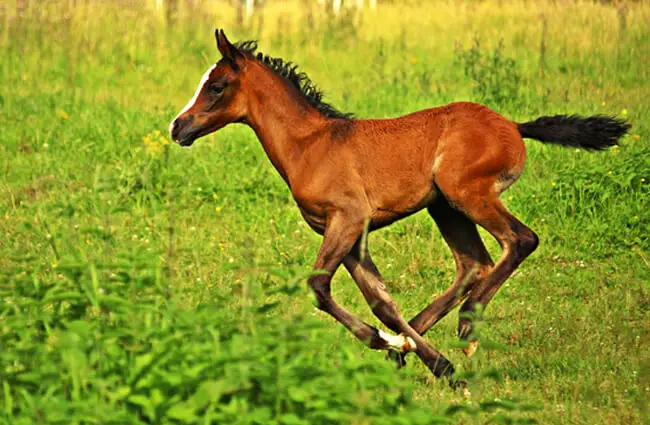
Interacting with Arabian Horses: A Partnership of Trust
Arabian Horses are renowned for their intelligence, sensitivity, and willingness to bond with humans. This makes them highly trainable and excellent partners for various equestrian disciplines. Their “people-oriented” nature is a direct result of centuries of close living with Bedouin families. When interacting with an Arabian Horse, whether in a stable or a rare encounter with a feral individual, remember these principles:
- Respect and Calmness: Approach quietly and confidently. Horses are sensitive to human emotions.
- Understanding Body Language: Learn to read equine cues. Pinned ears, swishing tails, or wide eyes can indicate discomfort.
- Safety First: Always prioritize safety. Avoid sudden movements or loud noises.
- No Feeding Without Permission: Never feed a horse you do not know, especially in a wild or feral setting, as it can lead to dependency or aggression.
For a hiker encountering a feral horse that appears to have Arabian characteristics, the best course of action is to observe from a distance. Do not approach, attempt to feed, or try to interact. These animals, while beautiful, are wild and can be unpredictable. Give them ample space and avoid disturbing their natural behavior.

Deep Dive for the Aspiring Zoologist and Zookeeper
For those seeking a more in-depth understanding, the Arabian Horse presents a fascinating case study in selective breeding, adaptation, and genetic influence.
Unique Anatomical and Physiological Adaptations
The Arabian Horse possesses several distinctive physical traits that set it apart and contribute to its legendary endurance and agility:
- Skeletal Structure:
- Often has 17 ribs, 5 lumbar vertebrae, and 16 tail vertebrae, fewer than other breeds (which typically have 18, 6, and 18 respectively). This lighter frame contributes to its agility and endurance.
- A short, strong back, ideal for carrying weight over long distances.
- Head and Face:
- A distinctive dished face, large expressive eyes, and small, alert ears.
- A broad forehead and large nostrils, allowing for maximum air intake during exertion.
- High Tail Carriage: A naturally high-set and carried tail, adding to its elegant silhouette.
- Dense Bone Structure: Despite their refined appearance, Arabians have incredibly dense bone, contributing to their soundness and durability.
- Efficient Thermoregulation: Their fine skin and short coat, combined with efficient sweating, help them dissipate heat effectively in hot climates.
Caring for Arabian Horses in Captivity: A Zookeeper’s Guide
Caring for an Arabian Horse in a captive environment, such as a zoo or specialized breeding facility, requires attention to their unique needs and temperament. A zookeeper’s tasks would include:
- Dietary Management:
- Provide high-quality forage (hay, pasture) as the primary diet.
- Supplement with concentrates based on age, activity level, and physiological state (e.g., breeding, growth, performance).
- Ensure constant access to fresh, clean water.
- Monitor body condition regularly to prevent obesity, which Arabians can be prone to if overfed.
- Environmental Enrichment:
- Provide ample space for exercise, ideally a large paddock or pasture.
- Offer opportunities for social interaction with other horses, if appropriate and safe.
- Introduce toys or puzzles to stimulate their intelligent minds.
- Ensure shelter from extreme weather conditions (sun, rain, wind).
- Health and Veterinary Care:
- Implement a regular vaccination and deworming schedule.
- Perform daily health checks for injuries, lameness, or signs of illness.
- Schedule routine farrier care (hoof trimming) every 4-8 weeks.
- Arrange for annual dental examinations and floating.
- Be aware of breed-specific genetic conditions, such as Severe Combined Immunodeficiency (SCID), Cerebellar Abiotrophy (CA), and Lavender Foal Syndrome (LFS), and ensure genetic testing has been performed on breeding stock.
- Grooming and Handling:
- Daily grooming helps maintain skin and coat health and strengthens the bond with the horse.
- Handle with consistent, gentle, and clear cues. Their sensitivity means they respond well to positive reinforcement.
- Provide regular exercise to maintain physical and mental well-being.
What to Avoid:
- Overfeeding: Leads to obesity and associated health problems like laminitis.
- Lack of Exercise: Can result in behavioral issues, muscle atrophy, and digestive problems.
- Harsh Handling: Arabians are sensitive; harsh treatment can make them fearful or resistant.
- Isolation: As herd animals, prolonged isolation can cause stress and anxiety.
- Neglecting Hoof Care: Poor hoof health can lead to lameness and chronic issues.
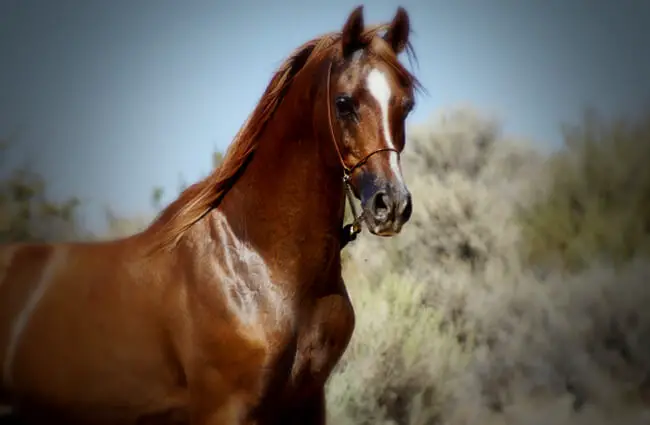
Fascinating Facts About the Arabian Horse
Here is a collection of intriguing facts that highlight the unique nature of the Arabian Horse:
- The “Dish Face”: Their distinctive concave profile is one of the most recognizable features of the breed.
- “Thirsty” Bloodlines: Bedouins believed that the best horses were those that could endure long periods without water, hence the term “thirsty” bloodlines for particularly hardy individuals.
- Foundation Sires: Nearly all modern light horse breeds, including the Thoroughbred, Morgan, and American Quarter Horse, trace their ancestry back to Arabian foundation sires.
- Exceptional Endurance: Arabians consistently dominate the sport of endurance riding, often covering 50 to 100 miles in a single day.
- The “Kehilan” Strain: Historically, Bedouins recognized five primary strains or “families” of Arabian horses, with Kehilan being one of the most prominent, known for its power and masculinity.
- A Living Work of Art: Their elegant conformation, flowing mane and tail, and expressive eyes have made them a favorite subject for artists throughout history.
- Sensitive Skin: Arabians often have very fine, sensitive skin, which requires careful grooming and protection from harsh weather or insect bites.
- Longevity: Many Arabian Horses live well into their late 20s and even 30s, remaining active and healthy.
- The “Myth of the Unicorn”: Some theories suggest that the Arabian Horse’s elegant head and spirited demeanor may have contributed to the ancient myths of the unicorn.
- Global Influence: There are more registered Arabian Horses in the United States than in any other country, showcasing their worldwide popularity.
Conclusion: A Timeless Equine Marvel
The Arabian Horse is a testament to the power of natural selection and the enduring partnership between humans and animals. From its ancient desert origins to its global presence today, this magnificent breed continues to inspire awe and admiration. Its unique physical traits, remarkable intelligence, and profound cultural impact ensure its place not just in history, but as a vibrant and cherished part of our world for generations to come. Understanding the Arabian Horse is to understand a piece of living history, a creature of beauty, resilience, and spirit.

![Red Angus Closeup of a beautiful Red Angus cowPhoto by: U.S. Department of Agriculture [pubic domain]https://creativecommons.org/licenses/by/2.0/](https://animals.net/wp-content/uploads/2020/03/Red-Angus-4-238x178.jpg)

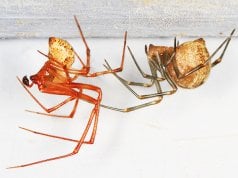


![Red Angus Closeup of a beautiful Red Angus cowPhoto by: U.S. Department of Agriculture [pubic domain]https://creativecommons.org/licenses/by/2.0/](https://animals.net/wp-content/uploads/2020/03/Red-Angus-4-100x75.jpg)

